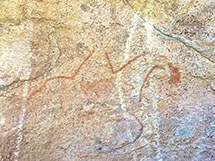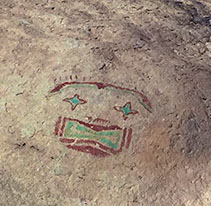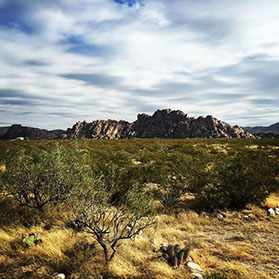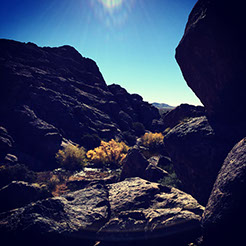Recommendations from TPWD of the Hueco Tanks Working Group
Last year, Texas Park and Wildlife Department, TPWD, held three public meetings and six meetings with working group members and TPWD staff to “explore the diverse community perspectives, concerns, opportunities, operations, and facility development at Hueco Tanks State Park & Historic Site,” Chris Beckcom, Planning & Geospatial Resources. TPWD has come up with a response to the working group recommendations and are moving forward hiring people to get some the recommendations to come to fruition.
The stakeholders representing recreation recently met with TPWD representative, Mark Lockwood, Region 1 Director, to review some of their responses to recommendations put forth by Hueco Tanks working group. The areas that were discussed in early February involving recreational use included, “cultural resources survey using D-Stretch to identify pictographs not recorded previously and guided rope climbing tours on North Mountain”, as stated by Lockwood in his email invitation.
These subjects are no longer up for discussion—they are being implemented. TPWD has recently hired a company that will take on the project of taking pictures of all rocks associated with climbing looking for invisible rock art to document using D-Stretch technology (here is a link to the bid proposal https://tpwd.texas.gov/business/bidops/current_bid_opportunities/services/media/802-16-33173_enhanced_rock_imagery_final.pdf). This project will begin March 21, 2016, it is going to cost the park approximately $100,000.00 and estimated to take 2 years. At the end of the 2 years the invisible rock art that is found will be evaluated to determine if the rock art is significant in nature and the climb should be closed. This, I believe, will raise some distress when climbs are closed for something that is invisible. However, the last thing we want to do is climb on rock art. TPWD is also looking for certified climbers to assist in this project. Mark Lockwood of TPWD alludes that the closures will not be vast, “I think that we all understand that there will be some impact to climbing activities at Hueco Tanks SP, but I anticipate that they will not be wide ranging.“
Some climbers feel as though this is a direct attack on climbing since the scope of the proposal is focused on climbing areas. The request for proposal reads, “Enhanced Documentation of Potential Native American Rock Imagery on or Adjacent to Known Climbing/Bouldering Routs at Hueco Tanks State and Historic Site, El Paso County, Texas.” According to TPWD they have limited the focus to climbing areas because of the high use of these boulders and to make the project more cost effective. Also, what seems to be the bottom line every argument, and is true in this situation, is that there are federal laws that protect cultural resources, The Archaeological Resources Protection Act and The Native American Graves Protection and Repatriation Act. Because of this federal law TPWD cannot ignore the new technology, D-Stretch, and has to protect what is there.
Many climbers want to see the history of bouldering defended in Hueco Tanks to the same level of the cultural resources. However, the federal laws protecting cultural resources basically trumps climbing’s 50 year time line and the birth of the bouldering grade system, the V scale. Lockwood of TPWD once again takes the time to explain:
The long history of climbing at Hueco Tanks SP&HS was discussed at various times during the working group process. While providing recreational access and opportunity is a very important part of the mission of Texas State Parks, that history and importance to users does not out weight the Federal and state laws governing cultural resource protection. There are other parks where natural resource concerns have impacted recreational uses as well. I certainly understand the concern that climbers have over such changes at Hueco, but there is no solution that balances these two things when there is a conflict. We will be discussing a way we can work together to document and protect climbing areas at Hueco in February, but there are going to be changes based on the continuing cultural resource inventory process.
TPWD is attempting to keep all user groups happily using the park together but will always defer to the law. My biggest hope as I continue to work with other stakeholder representatives, the Access Fund and TPWD is to make it so we can protect the cultural resources and preserve the climbs simultaneously. We are hoping that the park will revisit some previously closed areas and allow climbers work with the park to reopen them.
The park has agreed to open up sport climbing on North Mountain to guided rope tours not included in, “…North Mountain capacity constraints. I am recommending that we add technical climbing on North Mountain to the guided activities, but will need input to determine how,” explained Mark Lockwood. This change will hopefully be effective when the 2017 guiding concession contracts are designated.













